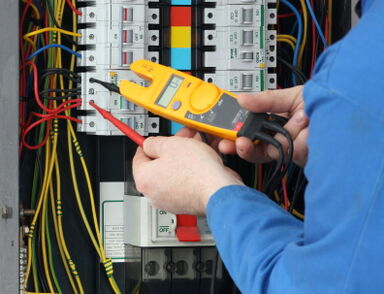The coils of the electromagnets are differentially wound with silk-covered wire, 4 mils (= 004 inch) in diameter, to a total resistance of 400 ohms. This differential winding enables the instrument to be used for " duplex " working, but the connexions of the wires to the terminal screws are such that the relay can be used for ordinary single working.
The shunts usually employed with the drum relay (referred to above) have each a resistance of about 30 ohms and an inductance of 20, 30 and 40 henrys respectively.
On creating an electric spark or wave in the neighbourhood of the tube the resistance suddenly falls to a few ohms and the cell sends a current through it.
For the purpose of measuring resistances up to a few thousand ohms, the most convenient appliance is a Wheatstone's Bridge (q.v), but when the resistance of the conductor to be measured is several hundred thousand ohms, or if it is the resistance of a so-called insulator, such as the insulating covering of the copper wires employed for distributing electric current in houses and buildings for electric lighting, then the ohmmeter is more convenient.
Hence the resistance of the insulator can be ascertained, since it is expressed in ohms by the ratio of the voltage of the battery in volts to the current through the C C galvanometer in amperes.



